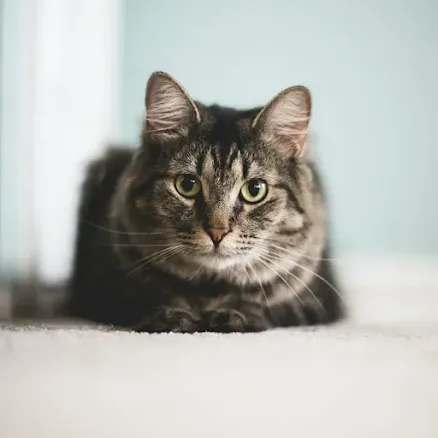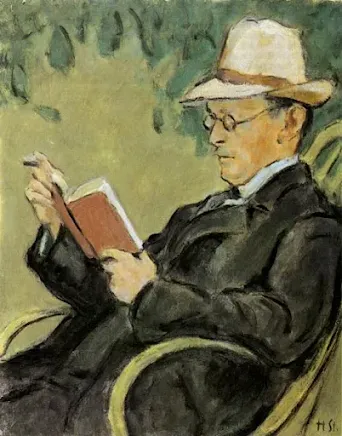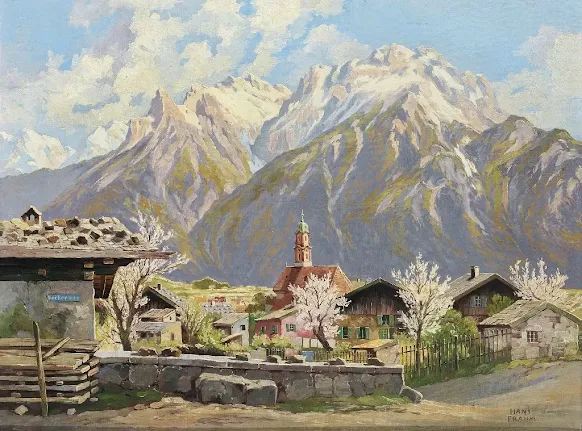Hermann Hesse's Pets: The Nobel Prize Author's Life
Hermann Hesse is one of the most prominent writers of the twentieth century, whose novels are distinguished by a thorough examination of topics such as spirituality, freedom, and the meaning of life. But what about his personal life? Did he have any pets? How did he interact with nature? If you're interested, let's explore that together
Even though Hesse's family did not own any particular pets while he was a child, the area in which he was raised was abundant in wildlife. There would have been plenty of places to observe birds, rodents, and other small creatures in the countryside. Other families also had pets.
One particularly unforgettable childhood memory involves young Hesse, maybe 15 or 16 years old, sneaking away from boarding school and spending the night in a meadow beneath the stars, listening to the sound of cows on the pasture. After this dramatic night spent in the embrace of nature, Hesse started an apprenticeship as a bookseller and then as a clockmechanic, neither of which he stayed for very long before realizing his true destiny as a novelist. Hesse's early writings often center on the hardships of growing up and discovering one's position in the world, as he experienced them directly, and they frequently use animals as a backdrop for the action.
After achieving financial success as a writer, he relocated to the breathtaking scenery of northern Italy and Switzerland, where he couldn't help but be inspired by the natural environment.
Hermann Hesse had his cat, Löwe, named after the German word for 'lion.' Löwe had a distinctive coat that resembled that of a tiger, making him a toyger cat. The name 'tiger cat' refers to how certain domestic cats' coats resemble those of tigers. Domestic cats with these coat patterns are often referred to as tiger cats due to their resemblance to the majestic tigers found in the wild.
While tiger cats are gorgeous, they are not a separate breed. A tabby can be born as tiger cat even if neither of the parents is a tabby. One distinctive feature of a tabby cat is the stripes forming a "M" pattern on the forehead.
Beyond their spectacular appearance, tiger cats have vibrant personalities. They are frequently described as adventurous and curious, always eager to investigate their environment with unbounded curiosity. Despite their independence, they develop strong ties with their human companions.
Whether curled up at Hesse's feet while he worked or prowling the gardens in quest of adventure, the presence of cats converted Casa Rosa into a refuge where nature's timeless cycles met the creative energy of art. While Löwe's presence in Casa Rosa was brief compared to Hermann Hesse's entire career as a writer, his presence had an unforgettable impact on him.
The symbol of the step-wolf was adopted by Harry Haller, the protagonist of Hesse's 'Steppenwolf,' and it reflected Harry's own independence, but also loneliness.
Hermann Hesse was vegetarian. Hesse's decision to become vegetarian is consistent with his overall ethical values of compassion, empathy, and nonviolence toward all living beings. His decision to avoid eating meat reflects his desire to live in peace with nature and his own consciousness.
Like many early vegetarians, he ate a variety of grains and bread as staples. Whole grains such as wheat, barley, and rye would have been popular options, as would bread produced from these grains. Hesse's meals would have included a variety of vegetables and fruits, reflecting the seasonal availability and local supply. Leafy greens, root vegetables, tomatoes, cucumbers, apples, berries, and citrus fruits were among the most popular fruits and vegetables. Legumes like beans, lentils, and peas are high in protein and would have played a key role in Hesse' vegetarian diet. Soups, stews, salads, and side dishes are all possible preparations for these meals.
While some vegans shun dairy items, Hesse ate milk products for protein and essential elements, and his preference for milk products was certainly influenced by childhood recollections of cow-filled meadows. Nuts and seeds are commonly seen in vegetarian diets. Hesse enjoyed almonds, walnuts, sunflower seeds, and sesame seeds as snacks or ingredients in cookery. To enhance the flavor of his vegetarian dishes, Hesse would have added herbs and spices such as basil, thyme, oregano, garlic, ginger, and turmeric.
Hesse was raised in a strict Pietist home without the presence of domestic animals, and his early years were marked by severe religious upbringing. The themes of growing up, leaving childhood, and becoming adult, as well as the challenges and pains that come with it, are woven into his writings as a result of his artistic tendencies clashing with his parents' expectations.
Hermann Hesse's connection to domestic animals and nature
During Hesse's lifetime, dogs and cats were among the most popular pets.
Particularly dogs were valued for their roles as buddies and protectors, but cats also served as domestic companions and rodent controllers.
Considering how rural the area was where Hesse was raised, many rural homes would have also kept farm animals for food, such as milk, eggs, and meat. In such circumstances, cows, chickens, and pigs were common, and young boys frequently had to deal with them.
Hesse was a late bloomer when it came to interacting and spending time with domestic pets; he didn't truly start being around animals and owning pets until he was well into his forties.
 |
| Hermann Hesse did not have domestic pets until his forties |
One particularly unforgettable childhood memory involves young Hesse, maybe 15 or 16 years old, sneaking away from boarding school and spending the night in a meadow beneath the stars, listening to the sound of cows on the pasture. After this dramatic night spent in the embrace of nature, Hesse started an apprenticeship as a bookseller and then as a clockmechanic, neither of which he stayed for very long before realizing his true destiny as a novelist. Hesse's early writings often center on the hardships of growing up and discovering one's position in the world, as he experienced them directly, and they frequently use animals as a backdrop for the action.
Later in his career, he abandoned the coming-of-age stories that characterized his first books and wrote on subjects like identity, spirituality, and the struggle for independence.
Hesse's first experiences as a pet owner
Hesse's restless spirit never ceased asking questions and embarked on various quests to discover the meaning of existence. The novel Peter Camenzind, written during Hesse's early years, finest illustrates this. It establishes the wonder and awe of nature early on and demonstrates how it influences the moral development of its characters. The plot follows Peter Camenzind, the work's titular character, as he grows up in the idyllic rural Alps and, upon moving to the town, encounters love, sadness, responsibility, and friendship for the first time.
Beautiful descriptions of the Alpine landscape, with its verdant forests, winding rivers, and towering mountains, open the story. Peter Camenzind's inner doubts are overcome by nature, which provides him with inspiration for the future and solace. Throughout Peter Camenzind's journey, animals appear frequently as metaphors for many aspects of life. For instance, Peter interprets the wounded eagle as a metaphor for his own spirit, which is incapable of flying, and the mountain goat as a symbolizing his longing for autonomy and self-sufficiency.
The Cats of Casa Rosa
After achieving financial success as a writer, he relocated to the breathtaking scenery of northern Italy and Switzerland, where he couldn't help but be inspired by the natural environment.
This was the first time he had a pet in his life.
Following years, Hermann Hesse spent a considerable amount of time in Casa Rosa, a small town near Lugano in the Italian-speaking part of Switzerland.
Hesse like to stroll through verdant meadows in the mountainous countryside of Casa Rosa, with the sound of leaves rustling and the infrequent barking of dogs or bowing of cattle providing a soundtrack. Although these encounters were brief, they definitely had a lasting impact on Hesse and confirmed his long-held desire to own a domestic pet.
Eventually, he acquired a cat named Löwe while living in Casa Rosa.
Hesse published more literary masterpieces while residing in Casa Rosa, solidifying his standing as one of the greatest authors of all time. Here are photos of Hermann Hesse and his beloved cat Lowe at Casa Rosa
Tiger (Toyger) Cats
 |
| In Casa Rosa, Hermann Hesse had his first domestic animal, a Toyger cat named Lowe |
While tiger cats are gorgeous, they are not a separate breed. A tabby can be born as tiger cat even if neither of the parents is a tabby. One distinctive feature of a tabby cat is the stripes forming a "M" pattern on the forehead.
Beyond their spectacular appearance, tiger cats have vibrant personalities. They are frequently described as adventurous and curious, always eager to investigate their environment with unbounded curiosity. Despite their independence, they develop strong ties with their human companions.
Studies have revealed that cats, known for their autonomous yet loving dispositions, can give a unique type of company that is particularly pleasant for people who value introspection and loneliness. Cats are acutely aware of their environment.
Cats frequently develop patterns and habits, such as curling up in a favored spot or demanding attention from their human friends at certain times of day.
It's probable that Löwe followed similar habits, and the cat's daily routines reflected the natural cycles of the seasons.
 |
| Cats frequently develop routines and habits within their environment that they regularly repeat |
Whether curled up at Hesse's feet while he worked or prowling the gardens in quest of adventure, the presence of cats converted Casa Rosa into a refuge where nature's timeless cycles met the creative energy of art. While Löwe's presence in Casa Rosa was brief compared to Hermann Hesse's entire career as a writer, his presence had an unforgettable impact on him.
Animals in Hesse's literary works
Hesse's writings frequently explore difficult areas of psychology and spirituality, but household animals are seldom widely mentioned. However, animals do feature in some of Hesse's books, frequently as symbols or as part of the natural world with which his protagonists interact.
In "Siddhartha," for example, the protagonist Siddhartha meets a variety of animals along his spiritual journey, including birds, snakes, and a ferryman's dog. These creatures represent parts of the natural world that Siddhartha observes and learns valuable lessons from.
In "Siddhartha," for example, the protagonist Siddhartha meets a variety of animals along his spiritual journey, including birds, snakes, and a ferryman's dog. These creatures represent parts of the natural world that Siddhartha observes and learns valuable lessons from.
The symbol of the step-wolf was adopted by Harry Haller, the protagonist of Hesse's 'Steppenwolf,' and it reflected Harry's own independence, but also loneliness.
The vegetarian lifestyle of Hermann Hesse
Hermann Hesse was vegetarian. Hesse's decision to become vegetarian is consistent with his overall ethical values of compassion, empathy, and nonviolence toward all living beings. His decision to avoid eating meat reflects his desire to live in peace with nature and his own consciousness.
Hesse lived at a time when vegetarianism was becoming fashionable in Europe and the United States, particularly among people with artistic interests.
Many biographies and memoirs about Hermann Hesse, as well as accounts from friends and family members, confirm his vegetarianism. Hesse's personal correspondence and notebooks also make mentions of his vegetarianism.
Like many early vegetarians, he ate a variety of grains and bread as staples. Whole grains such as wheat, barley, and rye would have been popular options, as would bread produced from these grains. Hesse's meals would have included a variety of vegetables and fruits, reflecting the seasonal availability and local supply. Leafy greens, root vegetables, tomatoes, cucumbers, apples, berries, and citrus fruits were among the most popular fruits and vegetables. Legumes like beans, lentils, and peas are high in protein and would have played a key role in Hesse' vegetarian diet. Soups, stews, salads, and side dishes are all possible preparations for these meals.
One of his favorite vegetarian recipes was polenta, which is made from coarsely crushed yellow cornmeal.
It can be served creamy, set, and then sliced, grilled, or baked. It is commonly served with mushroom ragu or cheese. Another dish that Hesse preferred was Risotto, which is a creamy rice dish that is cooked in broth until it has a thick consistency. Northern Italy is famous for its risottos, and vegetarian options frequently feature mushrooms, asparagus, pumpkin, or saffron. Torta Pasqualina, another of Hesse's favorite dishes, is a savory pie composed with layers of Swiss chard, ricotta cheese, and egg. It is traditionally consumed at Easter, however it can be found throughout the year. Hesse also like Frico, a typical delicacy from Friuli-Venezia Giulia made by frying shredded potatoes and cheese until crispy. It can be eaten alone or with added ingredients like onions or herbs.









Comments
Post a Comment